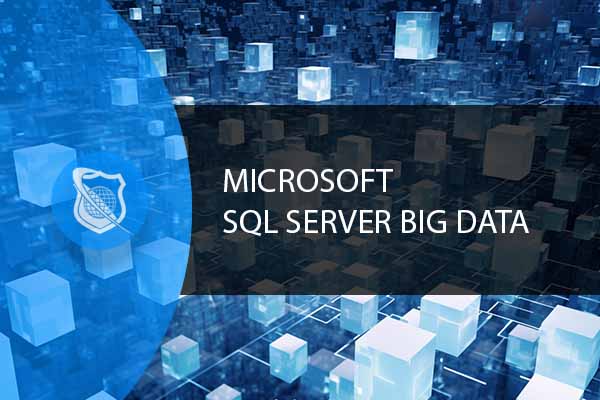Using MLeap refers to leveraging MLeap, which is an open-source library designed to enable seamless integration and deployment of machine learning models across various platforms and programming languages. The primary goal of MLeap is to eliminate the challenges often encountered when moving machine learning models from the development environment to production systems.
How MLeap Works
MLeap is based on the concept of serializing machine learning models into a portable format that can be used by different systems. It accomplishes this by converting models into a specialized format known as a “Bundle.” Bundles are lightweight and can be easily transported and executed within various runtime environments.
Benefits of Using MLeap
- Cross-Platform Compatibility: One of the significant advantages of MLeap is its ability to support a wide range of platforms, including Apache Spark, Apache Kafka, TensorFlow, Scikit-learn, and more. This flexibility allows data scientists and engineers to build models in their preferred frameworks and then deploy them in various systems without the need for reimplementation.
- Reduced Latency and Overhead: MLeap’s optimized Bundle format reduces the serialization and deserialization overhead, resulting in faster model loading and execution. This is particularly beneficial for real-time or low-latency applications where quick predictions are essential.
- Scalability and Efficiency: By supporting platforms like Apache Spark, MLeap allows machine learning models to scale and leverage distributed computing capabilities. This enables efficient processing of large-scale data and complex model pipelines.
- Ease of Deployment: With MLeap, deploying machine learning models becomes straightforward. The Bundles can be easily integrated into production systems, making it easier to push updated models and maintain consistency across different environments.
MLeap Workflow
The typical workflow for using MLeap involves the following steps:
- Train and Serialize Model: Data scientists train their machine learning models using their preferred frameworks (e.g., TensorFlow, Scikit-learn, etc.). Once the model is trained, it is serialized into an MLeap Bundle.
- Deployment: The MLeap Bundle is then deployed to the target production system or platform. This could be an Apache Spark cluster, a server application, or any other environment where predictions need to be made.
- Deserialization and Prediction: In the deployment environment, the MLeap Bundle is deserialized, and the model is reconstructed. The model is now ready to make predictions on new data, and the results are generated accordingly.
Learn Microsoft SQL – Big Data
Join ITU Online to dive deep into using Microsoft Big Data Clusters, one of SQL Server’s most impactful features—SQL Big Data Clusters. In this course, you will learn about data virtualization and data lakes for this complete artificial intelligence (AI) and machine learning (ML) platform within the SQL Server database engine.
Using MLeap with Microsoft Big Data technologies
Using MLeap with Microsoft Big Data technologies, such as Azure Databricks or Azure HDInsight, can enhance the process of deploying machine learning models on large-scale datasets. MLeap’s portability and compatibility with different platforms make it a suitable choice for integrating machine learning workflows with Microsoft’s Big Data solutions. Here’s a step-by-step guide on how to use MLeap with Microsoft Big Data:
1. Train and Serialize Model: Begin by training your machine learning model using a framework that is compatible with MLeap, such as Apache Spark MLlib or Scikit-learn. Train the model on a dataset that is representative of the problem you are trying to solve. Once the training is complete, serialize the model into an MLeap Bundle.
2. Set Up Microsoft Big Data Environment: Depending on your requirements, set up a Microsoft Big Data environment using either Azure Databricks or Azure HDInsight. Both services provide scalable and managed clusters for running big data workloads. Azure Databricks is ideal for collaborative data analytics, whereas Azure HDInsight is suitable for a wide range of big data processing tasks.
3. Install MLeap on the Big Data Cluster: Before using MLeap on the Microsoft Big Data cluster, ensure that MLeap is installed on all the nodes of the cluster. The installation process might vary depending on the cluster type. Follow the MLeap documentation or the specific documentation provided by the Microsoft Big Data service to install MLeap on the cluster.
4. Load MLeap Bundle in the Big Data Environment: Upload the MLeap Bundle containing your serialized machine learning model to the Microsoft Big Data environment. This can be achieved through standard file upload methods or storage options supported by the chosen service (e.g., Azure Blob Storage). Make sure the necessary permissions are set to access the Bundle from the cluster.
5. Deserialize and Use the Model: In your big data processing workflow (e.g., Spark job, Hive query, or Pig script), load the MLeap Bundle, and deserialize the machine learning model. The deserialized model can now be used to make predictions on large-scale datasets or for any other machine learning tasks as required.
6. Automate Model Updates (Optional): If your machine learning model requires periodic updates, automate the process of replacing the existing MLeap Bundle with the updated model. This ensures that your big data workflow always uses the latest version of the model without manual intervention.
7. Monitor and Optimize Performance: Once the model is deployed and integrated with your Microsoft Big Data workflow, monitor its performance and scalability. Optimize the workflow and infrastructure as needed to ensure efficient and reliable execution of the machine learning tasks.
Conclusion
Using MLeap simplifies the process of deploying machine learning models in diverse environments, reducing the complexities often associated with model integration. By serializing models into Bundles, MLeap ensures cross-platform compatibility and efficient execution. This versatility makes MLeap a valuable tool for data scientists and engineers who seek seamless deployment of machine learning models across various systems while maintaining performance and scalability.
Using MLeap with Microsoft Big Data services opens up new possibilities for deploying and scaling machine learning models on massive datasets. The combination of MLeap’s portability and Microsoft’s robust big data technologies enables seamless integration of machine learning workflows, empowering data scientists and engineers to extract valuable insights from large-scale data with ease and efficiency.
Integrating MLeap with Microsoft SQL Big Data: Your Questions Answered
What is MLeap and how does it integrate with Microsoft SQL Big Data?
MLeap is an open-source library designed to simplify the deployment of machine learning models. It allows you to serialize your ML models into a compact, execution-optimized format that can be easily deployed across various platforms. When integrated with Microsoft SQL Big Data, MLeap enables direct execution of these models within SQL Server instances, allowing for real-time predictions and analytics without the need for moving data outside the database environment. This integration facilitates a seamless workflow from model training to deployment and inference, directly within your big data ecosystem.
Why should I use MLeap with my Microsoft SQL Big Data Cluster?
Using MLeap with Microsoft SQL Big Data Clusters offers several benefits. Firstly, it significantly reduces the complexity and overhead associated with deploying machine learning models, as MLeap’s serialization capabilities allow for a straightforward model transfer between training environments and SQL Server. Secondly, it enhances performance by enabling model inference directly where your data resides, thus minimizing latency and eliminating the need for data movement. Lastly, this integration supports a wide array of ML models and frameworks, making it a versatile choice for various machine learning projects within your organization.
Can MLeap handle real-time data predictions within Microsoft SQL Big Data?
Yes, MLeap can handle real-time data predictions within Microsoft SQL Big Data environments. By deploying serialized ML models into SQL Server, MLeap allows for on-the-fly predictions as new data becomes available. This capability is particularly useful for applications requiring immediate insights, such as fraud detection, personalized recommendations, and real-time analytics. The integration ensures that these predictions are made with minimal latency, directly within the database, leveraging the full power of your SQL Big Data infrastructure.
How do I get started with MLeap and Microsoft SQL Big Data integration?
Getting started with integrating MLeap and Microsoft SQL Big Data involves a few key steps. First, you’ll need to train and serialize your machine learning model using MLeap’s libraries. Next, deploy the serialized model to your SQL Server within the Big Data Cluster. Finally, you can execute the model directly through T-SQL statements, utilizing the PREDICT function to perform inference. It’s recommended to review both MLeap and Microsoft SQL documentation for detailed instructions and to ensure your environment is properly configured for the integration.
What are the limitations of using MLeap with Microsoft SQL Big Data, and how can I address them?
While integrating MLeap with Microsoft SQL Big Data offers many advantages, there are some limitations to consider. One such limitation is the dependency on the MLeap runtime for executing models, which may not support all machine learning frameworks or the latest versions of those frameworks. Additionally, complex model architectures might require additional customization or optimization for efficient execution within SQL Server. To address these limitations, staying updated with the latest MLeap releases and actively participating in its community can provide solutions and workarounds. Additionally, working closely with your data engineering team to optimize model architectures for the SQL environment can mitigate potential performance issues.











